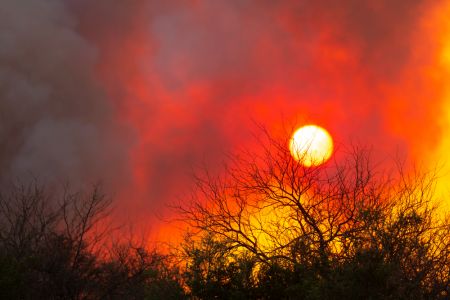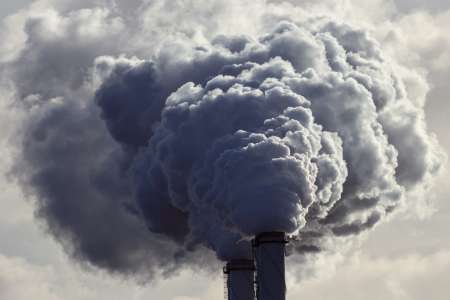Our Children Deserve a Healthy Planet
We and future generations, will immensely suffer if we destroy the ecosystems services we must have. Our children deserve a healthy planet — It's up to us to provide that for them.
11/12/2024

Our planet has gone through countless changes before humans came along, but there’s no doubt that our recent actions are destroying the environment and driving climate change. The overwhelming consensus among scientists is that if we keep ignoring climate change and environmental destruction, the Earth that our children grow up on will be severely damaged. It is easy to see that these issues are visible today and causing harm, and it’s tough to find any optimistic projections for the planet’s condition in the year 2050 and beyond.
A Growing Threat to Our Children’s Future

It’s up to us to keep our children’s smiles bright. iStock.com/Kalinovskiy
It is abundantly clear that climate change is not just a distant threat but a crisis already impacting the planet and every species. Today’s children face a distinctly different future than the one we grew up with. In a world with fewer resources, more frequent natural disasters, and impossible threats to their health and safety, environmental challenges won’t be occasional disruptions for them; they will be a constant and deadly reality, touching every part of their lives. Our decisions today, or lack thereof, profoundly shape the world they inherit tomorrow. Our inactions to address the environmental destruction will leave them struggling with avoidable crises; our proactive steps could create a safer, more stable environment.
What Can Happen?
While we did not invent climate change, human activities have triggered an accelerated warming of the planet by releasing greenhouse gases, deforesting large areas, polluting air and water, and exploiting natural resources. The worst-case scenarios are very dark, with some predictions calling for a temperature rise of up to 5 degrees Celsius (41°F) by the year 2100. These forecasts are based on our continuing use of ever-greater quantities of climate-warming carbon-based energies.
Even if we stopped using coal completely, other conditions, such as the increased release of methane from melting permafrost and other climate-affecting gases, the destruction of the Amazon rain forests, and the massive melting of glaciers and global ice would cancel out any gains made by ceasing coal use. There is plenty of evidence that climate warming is already occurring and worsening yearly. The issues are many; the solutions must be as well.
Humans and many other species are very picky about how warm and cold the planet must be for us to survive. Climate change that warms the planet outside of the existing norms is terrible news because we don’t adapt well to temperature extremes at either end. Extremely tiny changes in the earth’s temperatures result in huge changes in the climate, such as a “Little Ice Age” or a “Medieval Warm Period.”
The Worst Case Comes to Pass
On paper, a temperature rise of 5 degrees Celsius may not seem like a big deal. However, this increase would cause temperatures similar to those found during parts of the Cretaceous period when dinosaurs roamed the earth. Instead of future generations meeting gentle creatures like Bambi the Deer in the backyard, they may find Tyrannosaurus rex wandering around.

Pixabay/Aitoff
It’s not likely that temperatures will reach the average levels of the Cretaceous period, and Earth’s conditions are so different now that there can’t be another T-rex. Nonetheless, we must take action now to prevent climate change, for even a temperature increase of half that amount would cause catastrophic damage to our planet and all its inhabitants. Our children might be able to adapt to such a hostile environment, but it will be a very different and degraded ecosystem than the one we live in. Below, we explore how and why these climate-driven issues will intensify, directly affecting the lives and futures of our children.
1.) Increasingly Extreme Weather Events

Alder Fire in Yellowstone National Park, 2013. Photo by Mike Lewelling/NPS via flickr
The growing intensity and frequency of extreme weather events due to climate change are a warning from Mother Nature. Children today and in the future will grow up in a world where hurricanes, wildfires, floods, and heatwaves are not rare occurrences but regular, expected events. Ever-worsening severe storms and weather events are now labeled “once-in-a-lifetime” or “the worst storm in decades.” Our children will view them as everyday occurrences, constant exposure to natural disasters that, for many, force them to immigrate. Families will need to evacuate regularly, and communities will face repetitive cycles of recovery and rebuilding.
These extreme conditions cause physical damage but also disrupt the sense of safety and stability essential for children’s well-being. A child who grows up with frequent evacuations, school closures, or even losing a home and family members due to storms and wildfires will experience stress and instability during formative years. Constant exposure to these crises has long-term effects on mental health, leading to anxiety, depression, and post-traumatic stress disorder. For children, a world of unpredictable weather means growing up in a state of uncertainty, impacting their ability to focus on education, personal growth, and futures. Increases in criminal activities will follow.
2.) Scarcity of Essential Resources

Drought cracked land caused by global warming, climate change. Neenawat555/Depositphotos
Climate change’s impact on resources like water and food will reshape daily life for the next generations. Prolonged droughts and heatwaves reduce crop yields, increase food prices, and place entire food supplies at risk. Children today will face a future where fresh produce is more expensive or non-existent, water is rationed, and global food supplies are vulnerable to sudden disruptions. Water scarcity will become a critical issue as the demand for freshwater grows and supplies dwindle due to overuse and contamination.
Scarcities like these will intensify resource conflicts as communities and countries struggle to access adequate food and water. As resource competition escalates, conflicts over farmland, water rights, and fishing zones are expected to increase. Children will grow up in societies more prone to resource-driven disputes, impacting their security and the stability of the places they call home.
3.) Health Impacts and Environmental Hazards
Climate change indisputably affects human health, with children particularly vulnerable to its impacts. Higher temperatures lead to poor air quality, exacerbating respiratory problems like asthma. Children’s developing lungs are especially susceptible to air pollution, which leads to lifelong health issues. Rising temperatures also extend the range of disease-carrying insects, such as mosquitoes, spreading diseases like malaria, Zika, and dengue fever to previously unaffected regions, affecting us all.
Prolonged exposure to extreme heat can rapidly lead to dehydration, heatstroke, and other health issues in children. Poor air quality, new disease threats, and extreme heat may mean that children have to stay indoors more often, reducing outdoor playtime, limiting social interactions, and affecting physical development. They may face constant restrictions on outdoor activities as high pollution or extreme heat days directly impact their quality of life.
4.) Loss of Biodiversity and Natural Beauty

Baby raccoon lost its home due to human activities. Stock.com/JasonOndreicka
Future generations will grow up in a world with significantly less biodiversity. As ecosystems are damaged by rising temperatures, pollution, droughts, flooding, and deforestation, many species are at risk of extinction. Coral reefs, which support marine life, are dying due to ocean warming and acidification. Forests, home to countless species, are being rapidly destroyed. For children, this means a future where the natural world is less vibrant, diverse, and resilient. They may never see animals like polar bears or sea turtles or hear many songbirds in their natural habitats.
Losing these species diminishes the educational, emotional, and cultural benefits that nature provides. For children, encountering a wide range of wildlife and ecosystems is essential for learning about the world and developing a sense of wonder and respect for life. If biodiversity continues to decline, they will be deprived of these experiences, growing up in a world that feels smaller and more isolated.
The short version is that all species are interconnected and provide services for others. When too many linkages are damaged, human life may not survive.
5.) Economic and Social Instability
The economic consequences of climate change are already being felt and, in the future, will be beyond profound, impacting future generations in complex ways. As communities struggle to adapt to environmental changes, the cost of living will increase. Food and water shortages, healthcare needs, and disaster recovery efforts will place a heavy economic burden on societies, potentially reducing job opportunities, increasing taxes, and stretching social safety nets to the breaking point.
Towards a Livable Future

Image by Monkey Business/Depositphotos
We must take action to change the trajectory of the planet’s issues. Without them, today’s children will most likely enter adulthood in a world where financial security is more challenging. As societies fight over a basket of ever-shrinking resources, they will face higher costs for basics like food, healthcare, housing, and even more wars. Climate-driven social instability will result in frequent relocations, community tensions, and greater inequality as families flee regions hit hardest by climate change, population density, and resource competition.
Though the problems are daunting, there is still hope if we take action now to mitigate environmental destruction. We can alter the course of the future by reducing emissions, protecting natural habitats, and fostering a world where climate challenges are mitigated rather than intensified. You and I have a role in the solutions, from adopting more sustainable habits to supporting policies prioritizing environmental protection and resilience to simple things like turning off unused lights. That may seem simplistic, but together, these actions will create a ripple effect, slowing the pace of climate change and creating a safer world for our children.
We owe it to the next generation to ensure they have the resources, stability, and health they need to thrive. For that to happen, we need an Earth that is resilient, vibrant, and full of life—a planet where they can explore, dream, and build a life free from the constant shadow of climate crises and environmental destruction. Discover ways to contribute to this shared mission to achieve those goals.




















